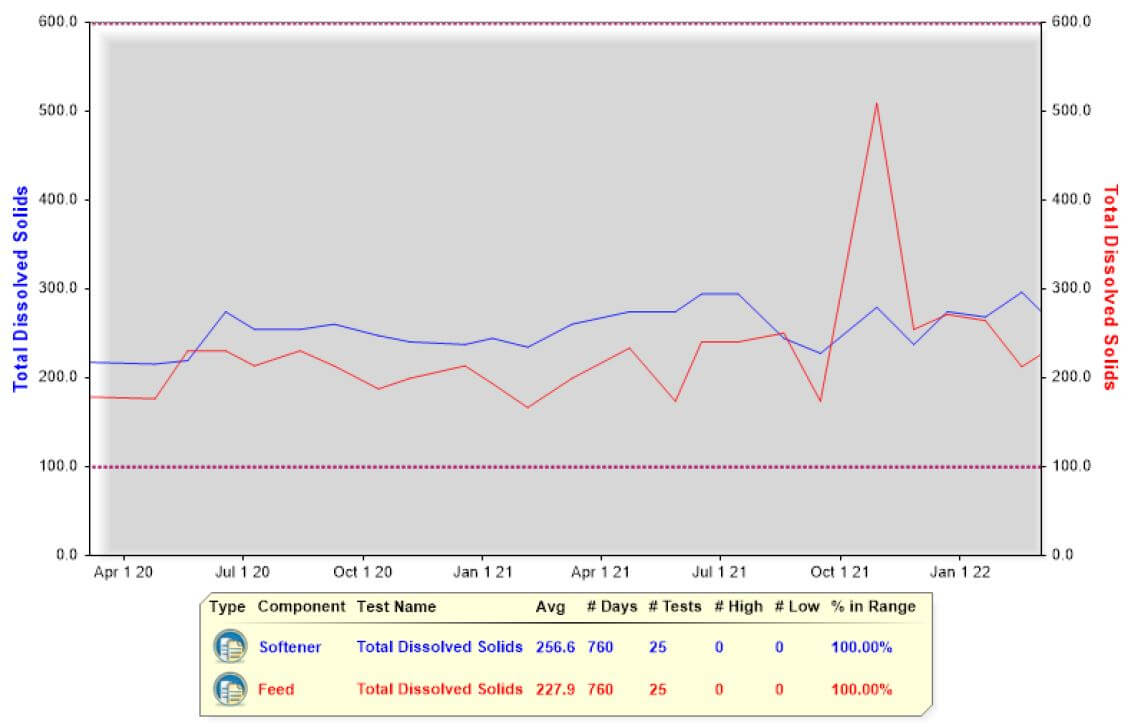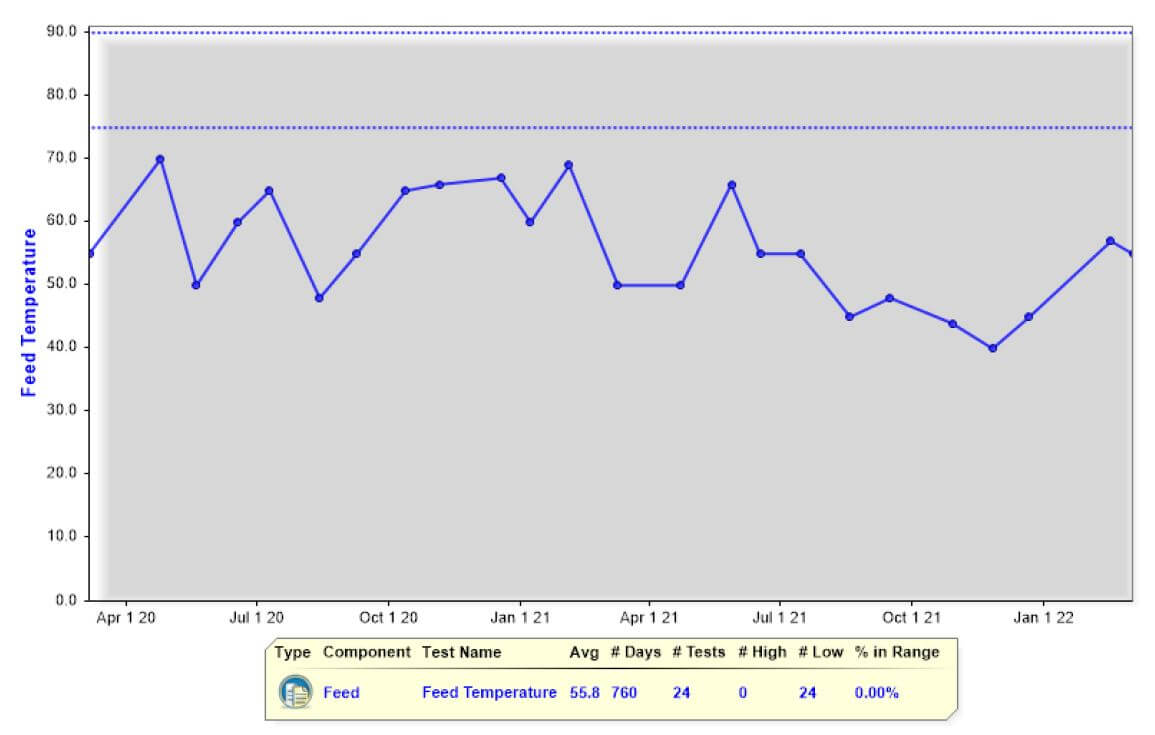Increasing boiler efficiency results in saving €60,000 a year
SUMMARY
In the current climate, with increasing energy costs, our client got in touch to see if anything can be done within his water system to increase efficiency and reduce running costs.
With two steam boilers on site, we decided to graph last years’ results and could immediately see one of the boilers was only running at full efficiency only 33% of the time in the past 2 years.
By carrying out a number of improvements, including installing a TDS probe, our client has the potential to save 6% on the fuel cost, which is a direct saving of €60,000 for our client, for very little capital outlay.
WHERE
Food manufacturing facility in Co. Leinster
OVERVIEW
Our client uses two steam boilers to operate the equipment (including ovens) in the facility and got in touch with us to see if any reductions could be made on operating costs to help with increasing energy prices.
Using our unique e-service system, we pulled the graphed results of the water samples from the boilers & their feed water over the last 2 years to get an overview of their performance. We noticed immediately one of the boilers had not been operating efficiently 66% of the time over the 2 year period.
We sat with our clients and went through each chart in detail and advised them the two main issues were:
- No control of the TDS (total dissolved solids) blowdown
- The feed temperature was too
TDS
![]()

The TDS control in the feed should always be less than that the softener when condensate is returning. The more condensate you bring back the lower the TDS will be in the feed. TDS control is critical and need to be kept as high as possible between the control of 2,900 to 3,500 to ensure the boiler is working efficiently.
FEED TEMPERATURE

The feed temperature should consistently be high at 85 degrees into the boiler, the boiler does not have to work as hard to produce steam. If you look at the control for feed temperature in the last two years site was 0% in control = average was 55 degrees. There is potential to save 6% on the fuel cost alone by increasing the feed temp to 85 degrees.
WHAT WAS DONE?
TO CONTROL TDS BLOWDOWN
- Installed an automatic TDS probe to provide better control of the dissolved solids
- This will have dual effect as It will allow site to save money on fuel the TDS in the boiler in now under their control, and will contribute to large savings on fuel, water, salt and chemicals
TO INCREASE FEEDWATER TEMPERATURE
- We deiced to take a 2-pronged approach to increase the temperature:
- The way the feed tank was set up originally, the condensate coming back was inefficient and so we brought in a sparge pipe to bring in the water and heat the bottom of the tank
- A steam injection control was installed with a thermostat, this will let our client know when it is low and it will inject steam into the tank
CONSIDERATIONS
- Due to the nature of the business, we would not alter the quality of the steam as it needed to remain of very high quality
- The whole facility was still operational, so we had to ensure minimal disruption caused
RESULTS
By carrying out minimal work with an outlay of approx. €5,000, not only has the efficiency of the steam boiler improved, our client has also gained a direct saving of 6% (€60,000) in fuel costs.
While monthly checks were being carried out on the boiler, it was only when sitting down and seeing the results graphed out could our client see for a small investment a large return could be made and is delighted to see these savings on their energy bills.
CONCLUSION
IF YOU CAN MEASURE IT YOU CAN IMPROVE IT ……. but only if you have the experts to analyse the data and make the recommendations and improvements.
This client had all the data but not in correct format. Numbers meant nothing but by graphing the data major issues showed up and actions could be taken to improve the efficiency of equipment and save money.
If you want to find out more and see what you can be saving – contact us on Tel: +353 18 252 775 or E-mail: info@aquachem.ie






